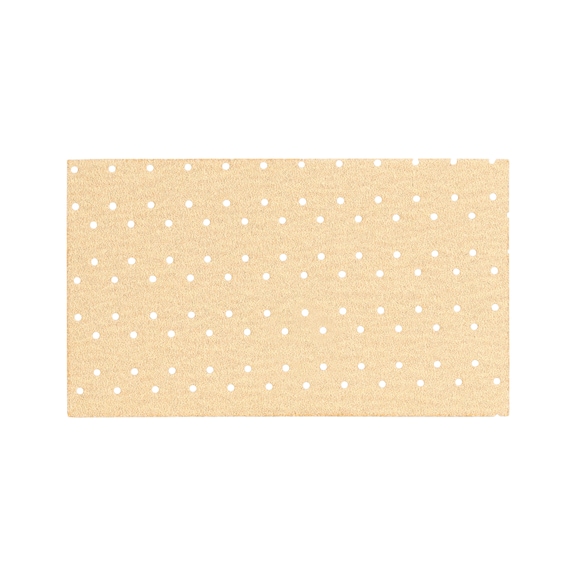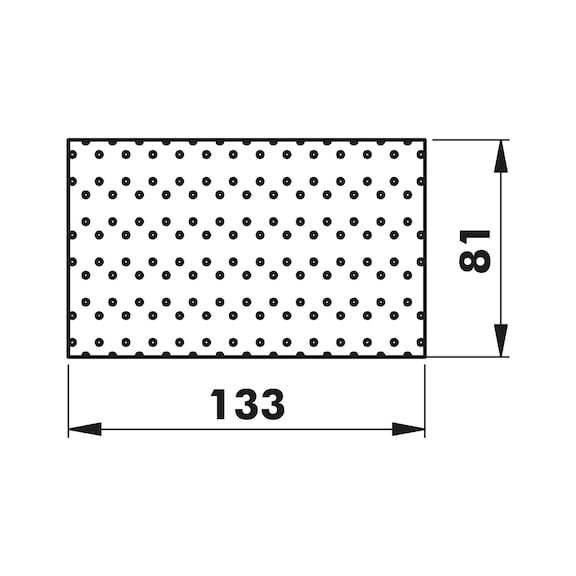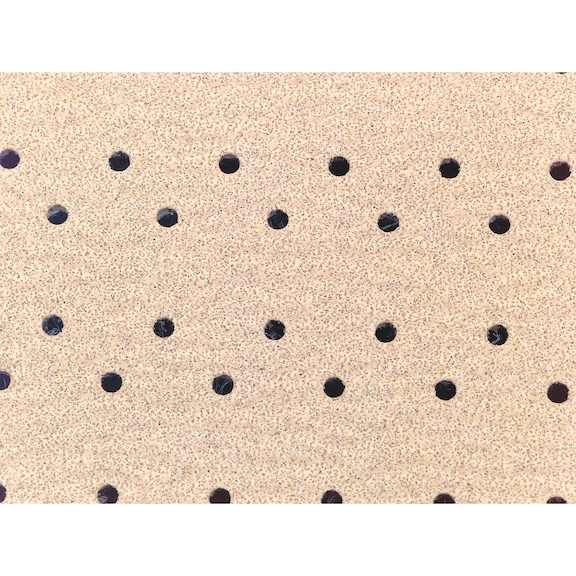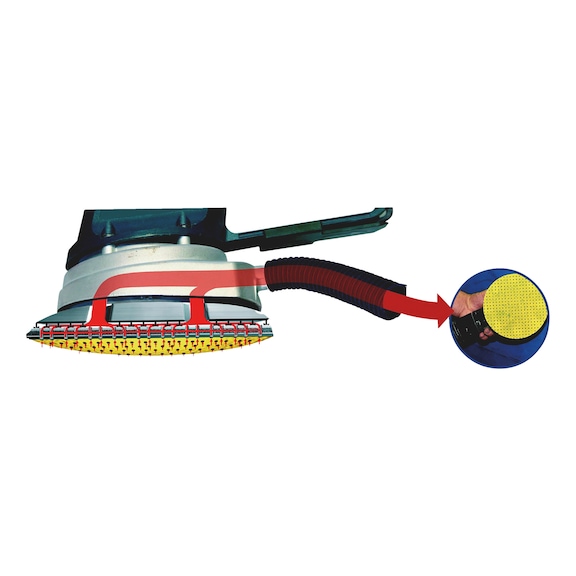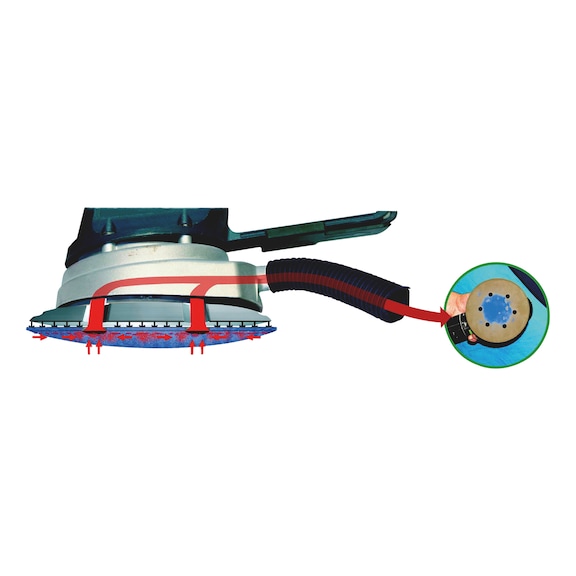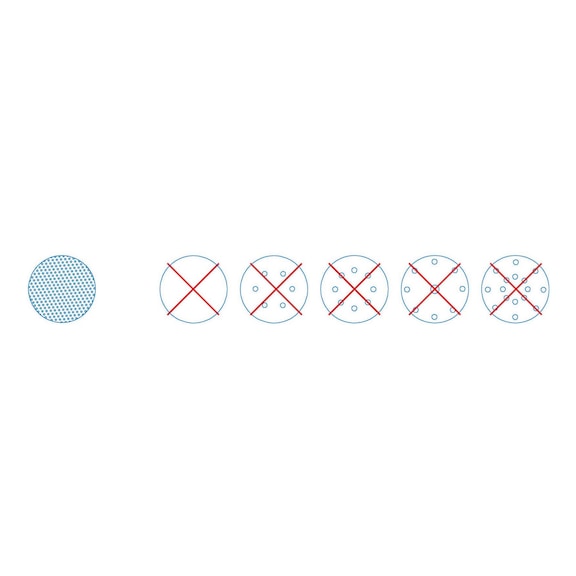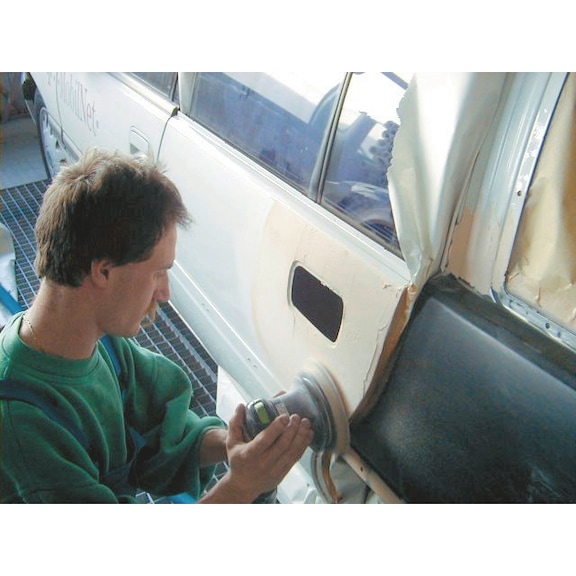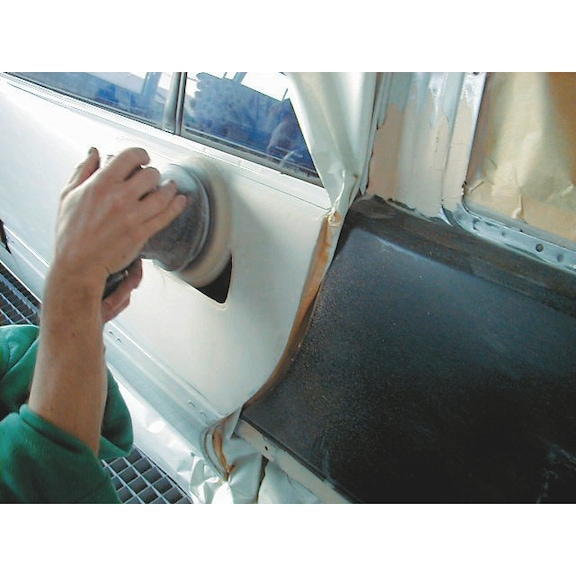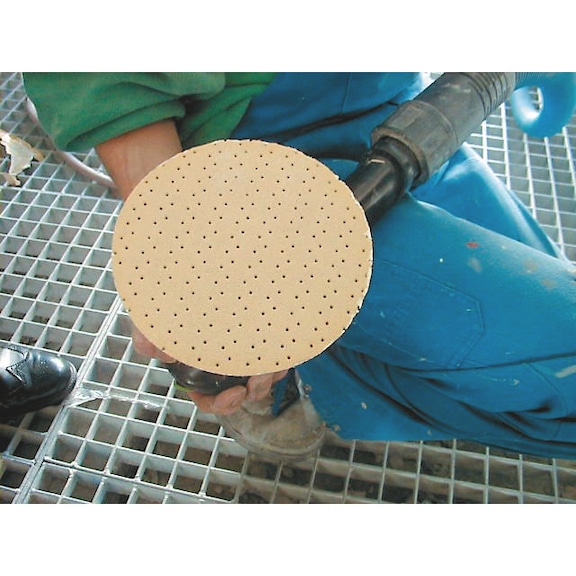For detailed information, other images and documents, please select individual articles from the following table.
Sandpaper strip Useit® Superpad vehicle
The perforated sanding strip for fillers, HS top-coat paints and water-based paints, as well as plastics and composite fibre materials (e.g. GFRP).
Register now and access more than 125,000 products

Variants
Register now and access more than 125,000 products
Sanding strip perforated over entire surface
- The sanding dust is vacuumed away completely from the entire surface.
- No clogging, high sanding performance, long service life, uniform grinding finish, high removal rate.
Dust and shade-free operation
Shorter sanding time and effective working with a sanding performance up to four times that of conventional perforated abrasives
Saves time and money.
In contrast to conventional perforated abrasives, the hole pattern of the Useit® Superpad P Vehicle was optimised for the material and the amount of dust produced.
No clogging of the sanding disc
The Useit Superpad P for vehicles is universally suitable for use with any sanding plate (regardless of holes) – with or without dust extraction.
Foam insulation
- Pressure equalising
- The spot pressure on the surface is reduced by the foam insulation.
The danger of sanding through on edges, beads and curves is reduced to a minimum
The following factors can affect the sanding results:
- 1. The condition of the surface (type of filler, spraying pattern, degree of drying through).
- 2. The processor (sanding pressure, feed rate, sanding technique).
- 3. The sanding plate (design, e.g. shape and hardness).
- 4. The processing machine (rotation speed, drive, stroke, suction etc.).
Select RAL-colour code
!! NOTE: On-screen visualisation of the colour differs from real colour shade!!

